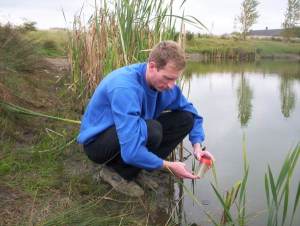In April of 2016 I sent a letter to the Minister of Health for Canada, The Honourable Jane Philpott, asking whether Health Canada would be doing any research into the presence of BMAA, a neurotoxin found in some blue-green algae, in Canadian lakes. There is growing research documenting the possible link between exposure to BMAA and motor neuron diseases like ALS, Alzheimer’s and Parkinson’s. I received a response to that letter a few weeks ago and excerpts are below. For full text of the letter scroll to the end of the post.
“Health Canada has, in collaboration with provinces and territories, recently completed a thorough assessment of the available scientific research on cyanobacterial toxins. This comprehensive assessment has been posted online for public consultation. Although the public consultation period has now ended, the consultation document on cyanobacterial toxins in drinking water is still available at
http://www.healthycanadians.gc.ca/health-system-systeme-sante/consultations/ cyanobacteria-cyanobacterie/document-eng.php.
As indicated in the GCDWQ, the current scientific research on BMAA indicates that no clear, direct links can be drawn between exposure to BMAA from cyanobacteria, and neurological effects. Further investigation is needed before a cause and effect relationship between BMAA and neurological disease can be established or discounted. The present evidence does not suggest that BMAA is a water quality hazard of human health concern; however, Health Canada will continue to monitor any developments on this topic.
John Cooper
Director, Water and Air Quality Bureau
Health Canada”
So at this point although there may be some private research going on about BMAA in Canadian waters there is nothing from our federal or provincial governments. Given the devastation caused by motor neuron diseases( ALS, Alzheimer’s, Parkinson’s) I think we should be taking the precautionary approach and considering BMAA a toxin to be avoided.
Health Canada
Healthy Environments and Consumer Safety Branch
Ms. Vicki Burns Director
Save Lake Winnipeg Project vickiburns@mts.net
Dear Ms. Burns:
Thank you for your e-mail of April 13, 2016, addressed to the Honourable Jane Philpott, Minister of Health, in which you raise the possibility of a link between the cyanobacterial toxin, 13-Methylamino-L-alanine (BMAA), and motor neuron diseases. I regret the delay in responding.
In your e-mail, you provided information regarding BMAA in blue-green algae blooms, and requested that the Minister of Health consider directing Health Canada to test blue-green algae blooms in different lakes across Canada to determine if BMAA is present. The Minister appreciates the information you have provided, and it has been shared with departmental officials for their consideration.
Health Canada is involved in many activities related to water quality, especially drinking water quality. Furthermore, when considering drinking water quality, responsibility is shared between the different levels of government. The principal responsibility of ensuring the safety of drinking water generally rests with the provinces and territories. Health Canada works with the provinces and territories to develop the Guidelines for Canadian Drinking Water Quality (GCDWQ). These guidelines are then used by each province and territory to help establish their own requirements for drinking water quality.
Health Canada has, in collaboration with provinces and territories, recently completed a thorough assessment of the available scientific research on cyanobacterial toxins. This comprehensive assessment has been posted online for public consultation.
Although the public consultation period has now ended, the consultation document on cyanobacterial toxins in drinking water is still available at
http://www.healthycanadians.gc.ca/health-system-systeme-sante/consultations/ cyanobacteria-cyanobacterie/document-eng.php.
As indicated in the GCDWQ, the current scientific research on BMAA indicates that no clear, direct links can be drawn between exposure to BMAA from cyanobacteria, and neurological effects. Further investigation is needed before a cause and effect relationship between BMAA and neurological disease can be established or discounted. The present evidence does not suggest that BMAA is a water quality hazard of human health concern; however, Health Canada will continue to monitor any developments on this topic.
Health Canada has conducted the monitoring of raw and treated water samples as part of specific research projects, but it does not routinely test water bodies. Monitoring for BMAA or any other cyanobacterial toxins in surface waters would fall under the jurisdiction of the federal department, as well as the provincial and territorial ministries, of the environment. As the Department of Environment and Climate Change would be better able to identify any lake monitoring that may already be in place, you have taken the correct step in sending a copy of your correspondence to the Honourable Catherine McKenna, Minister of Environment and Climate Change.
Again, thank you for writing.
Yours sincerely ,
John Cooper









